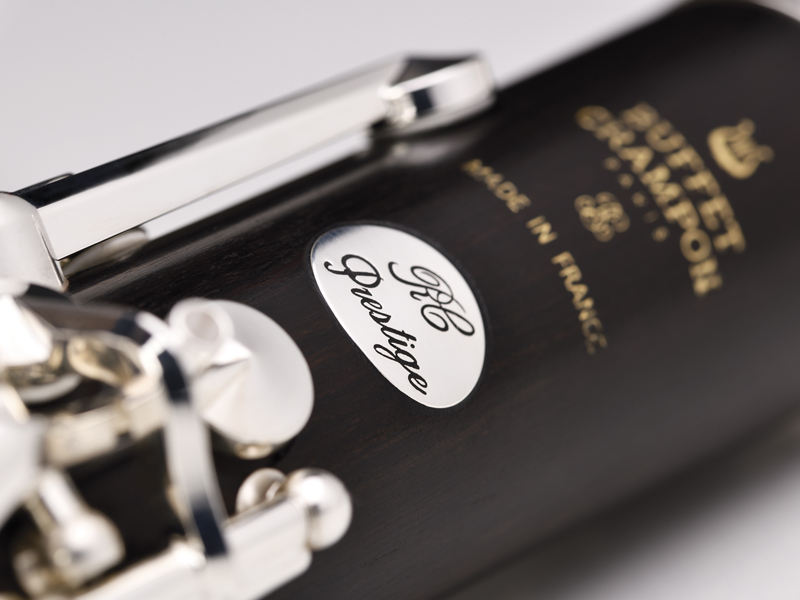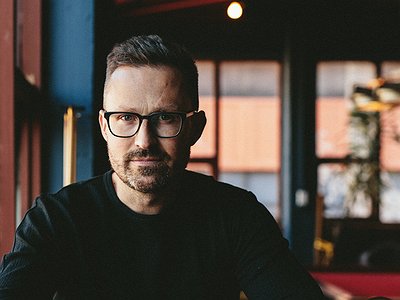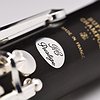Name: Dave Wilson
Nationality: New Zealand
Occupation: Saxophonist, clarinetist, improviser, composer, scholar
Current release: Dave Wilson's new album Ephemeral is out via Thelonious Records.
If you enjoyed this Dave Wilson interview, and would like to find out more about his music, visit his official homepage. He is also on Instagram, and twitter.
To keep reading, check out our previous interview with him about Musical Relationships and Forgiveness through Music.
When did you first start getting interested in musical improvisation?
When I was four years old, my parents put me in piano lessons, where I learned to read sheet music and played out of books from a method called Suzuki.
I remember enjoying the way I could add my own interpretations of dynamics and my own variations on tempos and tempo changes. At the time I thought of it as adding expression to the music based on how I was feeling at the moment, but it was probably more of an early interest in improvisation.
What I didn’t realize as a kid was that how I felt and what I was doing musically was informed by all the sounds that I had heard and found relevant to that moment, and by all the relationships that had played a part in what I was feeling.
Which artists, approaches, albums or performances involving prominent use of improvisation captured your imagination in the beginning?
I’d say that my imagination and my curiosity are continually being captured by new sounds, in a way that I feel like I’m always still at the beginning of something.
When I started on saxophone at age 10, my teacher (a trombone player) introduced me to the music of Charlie Parker, Miles Davis, and a few others that are typically canonized in jazz. My teacher highlighted the possibilities of improvising pitches and rhythms over harmonic structures, but I somehow knew there were other elements of their music that were drawing me in as well.
Then I started to listen to saxophone players releasing their own music at that time (the 90s), like Joshua Redman and Kenny Garrett. What they were doing with the sound of the instrument inspired me, and opened me up to improvising with the timbres and sounds of wind instruments.
Later when I started listening to and studying the music of artists like Ornette Coleman, Geri Allen, Cecil Taylor, and Nicole Mitchell my curiosity expanded to encompass not only the unending plethora of sonic parameters to improvise with, but also the intense interconnectedness of human relationships with musical improvisation.
These were probably all core early steps for me, but I like I said I’m encountering new approaches and sounds all the time in a way that makes me feel like I’m at new beginnings all the time.
Focusing on improvisation can be an incisive transition. Aside from musical considerations, there can also be personal motivations for looking for alternatives. Was this the case for you, and if so, in which way?
Working in groups has always energized me more than working on my own.
Part of it is probably my insecurities about my own work (and imposter syndrome) and part of it might be about feeling bored by my own thoughts and ideas, since I’m familiar with them. But I think it’s mostly because I enjoy working my ideas out in conversation and dialogue with others, which seems to make the ideas better and, maybe, more relatable to people.
I think focusing on improvisation in musical practice, for me, was a way to involve others and our real relationships in our artistic processes. I do improvise alone from time to time, and that always works best when I am aware of the reality that even when I’m playing alone, I’m engaging relationally with the presence of so many other people and other entities that I’ve shared space with in the past.
Tell me about your instrument and/or tools, please. How would you describe the relationship with it? What are its most important qualities and how do they influence the musical results and your own performance?
In my most recent work I’m playing just wind instruments – saxophones and clarinets, with few effects beyond gentle reverbs and EQs, and no electronics. On my new record Ephemeral I’m playing tenor saxophone and bass clarinet, and I’m on instruments that I have a long relationship with (my tenor is a Selmer Mark VI I’ve had since 2007 and my bass clarinet is a Buffet Prestige I’ve had since 2016). 
Buffet Prestige Image (c) Buffet
So I bring all of the musical and relational experiences I’ve had over many years playing those particular instruments to the table each time I play, which includes each instrument’s many idiosyncrasies. There are lots of layers.
On this saxophone I switched to a JodyJazz mouthpiece before I recorded SLANT, an improvised album I made in Los Angeles with the pianist Richard Valitutto (now based in Berlin), which helped me do more of what I wanted with my sound.
Before I recorded Ephemeral I found this amazing ligature that holds reed the mouthpiece only with two tiny wooden rods. The vibrations of the cane reed energize the air column from my breath and make the sound, shaped by my lower lip and connected to the saxophone via organic wood material. I feel like because of these organic connections between my body and the vibrations, the sound has a dark roundness to it that was just right for the record.
I always say that the bass clarinet that I have kind of plays itself. I really do feel like a conduit of sorts when I’m really connected to it. Some orchestral clarinet players I know in the classical world have complimented me on my bass clarinet sound, but I don’t know, I feel like it’s the instrument that’s doing it.
The crucial elements of this project were the rest of the instruments and the individual people playing them bringing all of their experiences and who they are to the project. It really is a picture of what can happen musically here in Te Whanganui-a-Tara Wellington, in Aotearoa New Zealand. I can’t list them all here but I’ve been doing tributes to each person on Instagram leading up to the album’s release.
Honestly the timbre and expressive style of each person’s instrument – the cello, viola, two violins, the guitar, the bass, the drums, the trumpet – they all shaped one another’s and my improvisation in a way that sonically encapsulated everyone as a person and their relatedness to each other in that time.
Derek Bailey defined improvising as the search for material which is endlessly transformable. Regardless of whether or not you agree with his perspective, what kind of materials have turned to be particularly transformable and stimulating for you?
To me what is stimulating and transformable is the materiality of relationships and the sounds made relationally. I personally don’t see improvisation as “using” material as a tool or as a means to an end, just like I don’t have a utilitarian perspective on relationships.
Improvisation, as artistic process and action, is something that moves through relationships. It reflects relationships and shapes them, and is part of them transforming, changing, and growing in many directions.
When you're improvising, does it actually feel like you're inventing something on the spot – or are you inventively re-arranging patterns from preparations, practise or previous performances?
To me improvisation is an invoking of so many things that have come before, acknowledging mentors, ancestors, memories. The myth and construct of “individual genius” disappears quickly in music that is acknowledged as improvised in collectivity.
Sound, including musical sound, is always relational since vibrations are shared and perceived by anyone / anything in a space, or with access to a recording. And a sound, when it is perceived or heard, can be compared or related to anything from the past or present, or envisioned future, but in a way that is new in the same way that each moment in time is new.
So I suppose my answer is yes – improvisation is always something new – and yes – it always draws on meaningful moments and relationships and habits and stories.
To you, are there rules in improvisation? If so, what kind of rules are these?
I think of them less as rules and more as frames to be aware of, that can be followed, shaped, and subverted. Sometimes the frames are established as a norm in advance of a performance, and sometimes they emerge as the improvisational moment unfolds.
They usually have to do with elements of the sound, or elements of social behavior, which are interconnected.
In a live situation, decisions between creatives often work without words. How does this process work – and how does it change your performance compared to a solo performance?
The first track on Ephemeral is full of moments like this, where we as musicians are all making decisions live in real time.
Sometimes these decisions align, when through our listening we are all deciding together what is best for the next moment and then we do it. This is really clear on that track during few moments when the saxophone is playing with the guitar, bass, and drums, and a few when the trumpet is playing with those same three.
When I listen to it now these moments sound like they were coordinated and pre-planned, but they were more of an unfolding of the group’s collective intentions. The playing doesn’t always line up like this, so sometimes it is more of a real-time sonic negotiation of a few directions, which is also cool.
How do you see the relationship between sound, space and performance and what are some of your strategies and approaches of working with them?
I’ve explored the relationship between sound, space, sociality, and political economy a lot in my work as a scholar of music and sound. For those that want to nerd out, I wrote an article about it as related to electronic music clubs in Skopje in the academic journal Ethnomusicology last year (if anyone wants to read it and hits a paywall, just get in touch).
For the Ephemeral project I really want to open audiences and listeners to ways of listening that are experienced as active participation rather than in the typical false dichotomy of performer-audience. I know space is a big part of either reaffirming or challenging that dichotomy. In one of the early iterations of this project we the players were in the center of a space with the audience surrounding us, which created a completely different experience of listening and shaped our playing as well in a good way.
I’d like to take this further with the project, but have come up against a lot of constraints. The architectural design of performance spaces, especially when it comes to amplifying strings so they can be heard over drums, often allows for very limited spatial set ups, which tend to have the performers on stage and the audience seated or standing facing them.
Another deep dive into this (and other fascinating concepts) is Dylan Robinson’s book Hungry Listening: Resonant Theory for Indigenous Sound Studies. He writes from an Indigenous perspective about a lot of related issues, including how classical music worlds have influenced the spatiality of many performances and, he suggests, have worked to colonize listening practices by “fixing” listeners in place, in many harmful senses of the word “fix.”
I’m interested in how improvisation can participate in an “unfixing” of listening practices to open up more liberatory potentials. It’s a journey for sure.
In a way, improvisations remind us of the transitory nature of life. What, do you feel, can music and improvisation express and reveal about life and death?
I wrote one of the pieces on this record as a reflection of the life and death of my maternal grandmother, who we called Mimi. She passed at the age of 95 a few years back. The title, “A Hundred Glowing Clouds,” is a line from a Victor Hugo poem about a sunset, and that image depicts so much about the vibrancy that I felt from her especially in the last five or ten years of her life. It was almost as if she was becoming more free and more alive as her body neared the end of its life.
Two other pieces on the record, “For Olivia” and “Liv’s Theme,” were inspired by a tune that my niece was singing one day when she was two years old.
I asked her parents (my sister and her husband) if I could turn the tune into a composition, and they agreed. By the time I recorded, everyone had long forgotten the moment that she sang the tune, and the pieces became a sort of glimpse of those fleeting but intense years of childhood, so close to the beginning of life.
These three tracks all share a kind of melancholy tinged with joy in the way the ensemble plays them. The entire record could be described that way, really. All of us in the group had experienced death and new life at various proximities and dealt with those experiences in our own ways, which I think shines through in the playing.
Some time has passed since we recorded, and we’ve all grown and changed in that time. So it’ll probably have at least a slightly different sense next time we play together.





